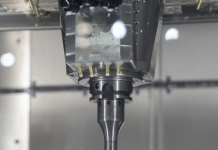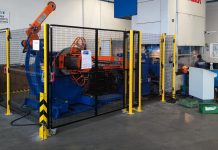New requirements, new production and transformation technologies make the latest generation of high-strength steels an extremely interesting material
A few years ago, it was thought that steel was a material in decline, most likely used for a limited number of applications with falling interest, especially in the transport sector. Instead, we are witnessing a change of direction, thanks also to the development of new steel families that are able to combine interesting performance, a good cost/resistance ratio and an optimal overall stiffness/weight ratio: all characteristics are of great interest, particularly for the automotive and transport sectors in general.
These steels are the high strength steels, known as AHSS (Advanced High Strength Steels), a family in continuous evolution, especially for those dedicated to use in the automotive industry. AHSS represent a constant innovation in the field of steels, as they have a very high strength, while maintaining the high formability necessary for typical automotive processing, thanks to an accurate control of both their MICROSTRUCTURE and the process with which they are produced. In fact, AHSS steels have dual structures and complex phases that require careful control of both the alloying elements and the production process.
In general, it should not be forgotten that research and development of new steels is the natural consequence of the evolution of needs: it goes without saying that development is made possible by studies in never-ending mechanical technology, materials and science, pushing each other, are able to lead to innovation, both of materials and of technologies that produce and transform them.
AHSS and Automotive
Why are AHSS steels of particular interest to the automotive industry? One could answer this simply by considering which requirements the car of the third millennium must meet: safety, low fuel consumption, and performance. Security, given the immeasurable value of human life. Reduced consumption, both to contain management costs and meet environmental sustainability criteria, hoping to ensure a future for planet Earth. Performance, that is, performance that no one is willing to give up today.
If these are user needs, the manufacturer must also consider other aspects, including manufacturability, quality, repeatability, and durability, without obviously neglecting the cost of both materials and production processes, which significantly affect the competitiveness of the finished product.
Safety regulations continue to push for improvements in frontal, side, and rear impact resistance, as well as roof strength, including assessment of rollover conditions. In general, this means adding weight, which goes against reducing weight to improve efficiency and reduce emissions, as well as increasing costs. So what? It is then/the engineers’ task to identify those parts that can be redesigned, with different geometries and taking advantage of opportunities offered by new materials. AHSS steels can be an advantageous solution, given the wide range of grades, which allows design flexibility: The use of a stronger steel allows designers to think of “thinner”, or reduced gauge, structures to produce a lighter piece, but maintaining or improving strength and additional required performance properties.
Producibility, durability, quality and cost are other important factors that drive the automotive industry in the search for better materials. It is precisely to meet these challenges that the steel industry has developed, and continues to develop, a wide range of AHSS with unique properties, able to meet the different demands of the sector: the new generation high-strength steels are proving to be effective both in improving performance and reducing mass, without increasing costs.
AHSS, the high-strength steels
AHSS are more complex steels than conventional ones, in particular, with regard to the microstructure, generally multiphase, to ensure a good combination of strength and ductility; the balance between strength and ductility, AHSS combine excellent formability with advantageous mechanical properties. It is worth pointing out that high-strength and advanced high-strengthrefer to steels with similar basic characteristics but the latter (AHSS) were developed later than the former (HSS) and therefore have improved strength, ductility, and formability. Typically, HSS steels are defined as steels with yield strength 210÷500MPa, while AHSS steels are defined as steels with yield strength greater than 500MPa. Literature sometimes refers to ultra high-strength steels when the load exceeds 780MPa.
The difference between conventional HSS and AHSS is their microstructure: HSS are essentially single-phase ferritic steels, while the latest generation of AHSS have complex multiphase microstructures containing bainite, martensite and residual austenite, which allow them to achieve unique mechanical properties.
The latest generation of high-strength steels are essentially:
- Microalloyed steels, which owe their increased strength to the addition of microalloyed elements such as niobium and titanium. They are named according to the minimum yield point
- Bainitic steels, named according to minimum yield strength
- Dual phase steels, with two phases, one ferritic and one martensitic: ferrite is soft and gives formability, while martensite is hard and gives strength
- Complex phase steels, whose microstructure contains, in smaller quantities, martensite, austenite and pearlite within the ferrite/bainite matrix. They have a high-yield strength.
- Roll forming steels, made specifically for roll forming, have a high yield strength to tensile strength ratio. They have high internal purity, with a homogeneous distribution of hardness within the microstructure
- Martensitic steels, which contain 100% martensite; they reach very high values of both yield and tensile strength.
- TRIP (Transformation induced plasticity)
- TWIP(Twinning induced plasticity)
The study and development of these steels stems from the automotive industry’s need to combine, for structural components, mechanical characteristics with reduced weight, increasing vehicle efficiency. Metallurgical efforts to increase strength led to a decrease in ductility which, in the case of vehicles, can become a problem in the event of a collision, as evidenced in crash tests.
TRIP steels are triple-phase steels, with a peculiar mechanical behavior, attributed to the transformation of the residual, untransformed and metastable austenite into martensite, a transformation that occurs during plastic deformation. In practice, the plasticity properties change during the plastic deformation process: in the event of a collision, i.e. impact, but also during stamping, the metastable austenite turns into hard martensite, spreading the deformation over the surrounding material. This mechanism allows optimal exploitation of the strength characteristics of TRIP steel, which is essential for safety.
TWIP steels have the peculiarity of deforming due to germination: the formation of the germination cores produces an effect comparable to that of the refinement of the crystalline grain, determining a sort of obstacle to the motion of dislocations. TWIPs have a high manganese content, 17÷25%, to stabilize austenite at room temperature and to control Stacking Fault Energy within values such that germination is the main deformation mechanism.
Tensile strength can reach and exceed 1600 MPa, ductility is very high, as is impact toughness. It should be noted that the impact toughness remains high even at low temperatures and high deformation rates and this means that there is no transition, typical of many steels, from ductile to brittle fracture, which implies a reduction in the energy content required for fracture. This feature proves to be particularly interesting because, thanks to high strength, the resistance sections can be reduced, to the benefit of weight reduction. But that’s not all: the excellent resistance to dynamic stress means that the components are able to absorb energy during a collision, to the benefit of safety.
The name itself, high strength, makes clear the difficulty in processing, due to the greater force that must be applied in both cutting and forming. Consequently, the evolution of high-strength steels is accompanied by an evolution of tool (and die) steels, so as to ensure an optimization of process economy.



